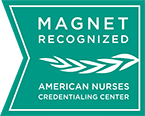Evaluating the effectiveness of arterial pressure point techniques as a first aid method for external haemorrhage control: A systematic review.
Rodgers, Z.J., Bejmert, K., Chung, T., Furness, J., Abery, P., Kemp‐Smith, K., Taylor, N., Bruce, K.C. and Snelling, P.J., 2024. Evaluating the effectiveness of arterial pressure point techniques as a first aid method for external haemorrhage control: A systematic review. Emergency Medicine Australasia.




